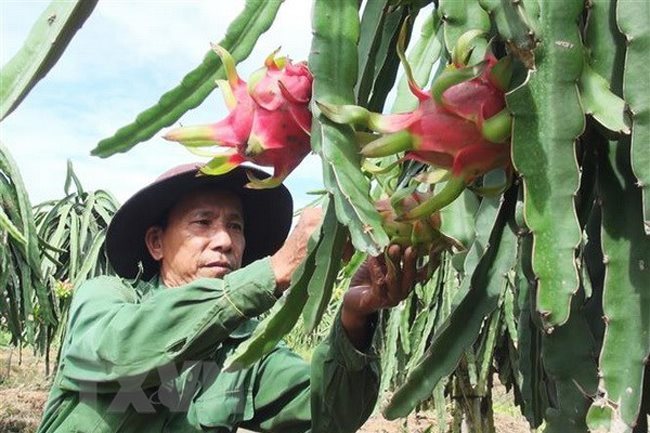Fruit, vegetable exports slip
Fruit, vegetable exports slip
Revenue from fruit and vegetable exports generated an estimated US$3.5 billion in the January-November period, marking a year-on-year decline of 0.6%, according to the Agro Processing and Market Development Authority.

China, the country’s largest fruit and vegetable importer, accounted for 66.8% of Vietnam’s total exports, but its spending on Vietnamese produce fell 13.7% year-on-year, VnEconomy news site reported.
Though the 11-month period saw an increase in revenue from produce shipments to the United States, Europe, Japan, South Korea and the Netherlands, it was hard to make up for the Chinese market’s decline.
As for fruits, dragon fruit and durian exports took the lead by value. Dragon fruit generated US$974.3 million between January and November, but inched down 8.9% year-on-year, while durian exports fetched US$759 million, down 17.4% against the year-ago period.
The value of outbound shipments of coconuts, longans and watermelons also plunged by 34.9%, 56.2% and 26.4%, respectively.
Meanwhile, Vietnam imported over US$1.6 billion worth of farm produce between January and November this year alone, up 3.4% year-on-year, with 29.7% from Thailand, 25.6% from China, 15.5% from the United States and 6.3% from Australia.
The Agro Processing and Market Development Authority reported that the fall in fruit and vegetable exports has dragged down the prices of agro products.
The price of durians has tumbled by VND20,000 per kilogram as since mid-2019, China has tightened its control over import activities, while durians have yet to be exported through formal channels. Dragon fruits have also edged down to VND5,000-7,000 per kilogram from VND10,000 per kilogram.
Le Thanh Hoa, deputy director of the authority, said that apart from boosting the registration of growing area codes and packaging codes to ramp up fruit and vegetable exports to China, local firms active in this sector should focus on investment in technology and modern equipment for their production and processing operations.
In addition, they should prioritize cooperation and connection with partners in supply chains to raise their export capacity.
As some of Vietnam’s produce consumers have set strict requirements on imports, the Ministry of Agriculture and Rural Development has proposed the Government issue preferential policies for the agricultural sector so that exports of fruits and vegetables can overcome these technical barriers.





















